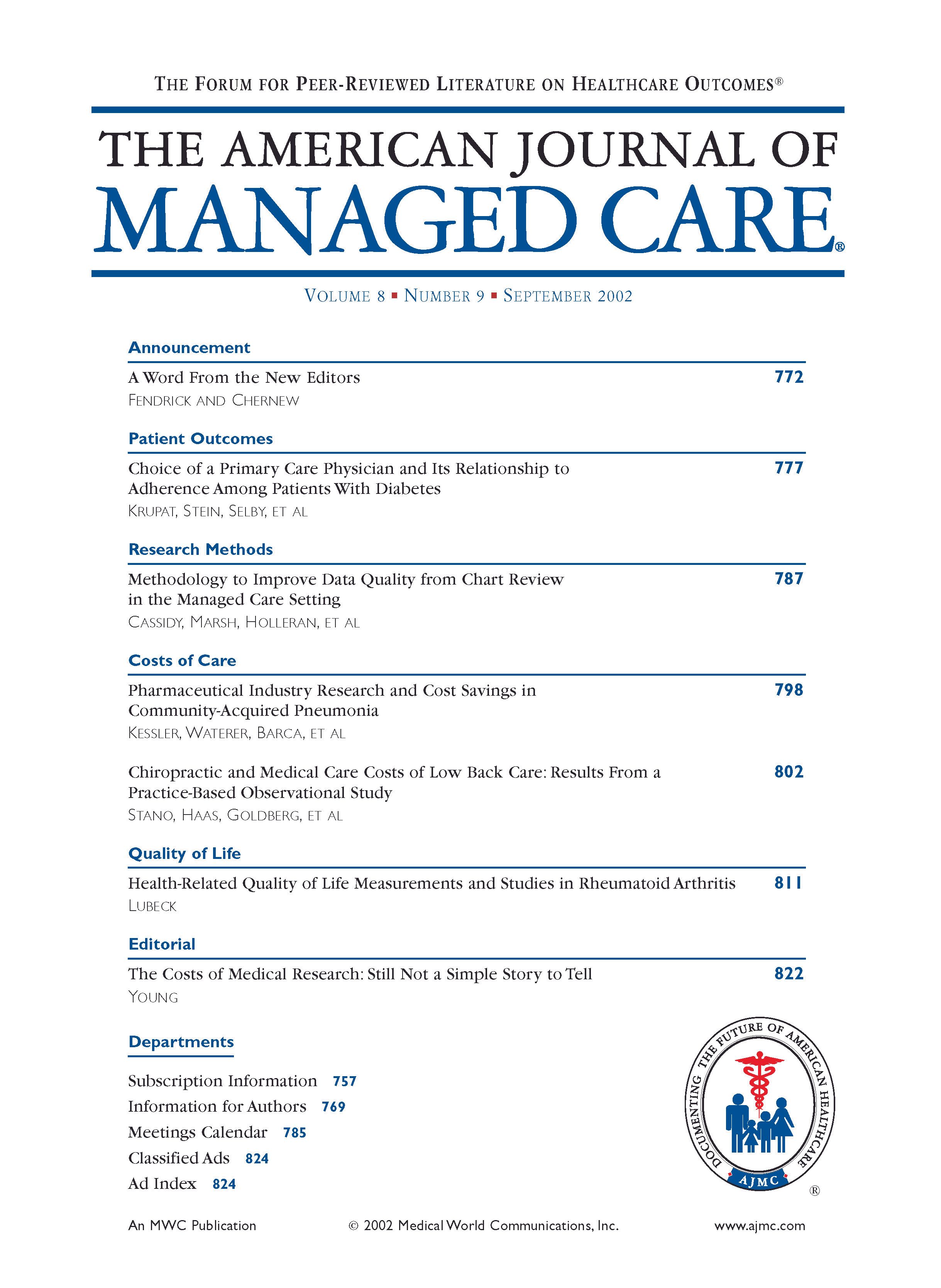- Center on Health Equity & Access
- Clinical
- Health Care Cost
- Health Care Delivery
- Insurance
- Policy
- Technology
- Value-Based Care
Prevention & Screening
Validation of a Surveillance Case Definition for Arthritis
Yood RA, Sacks JJ, Harrold LR, Helmick CG, Gurwitz JH, Emani S
Contact:
Marianne Ulcickas Yood, SDc, MPH, Henry Ford Health System, Josephine Ford Cancer Center, 275 Blue Trail, Hamden, CT 06578. E-mail: muyood@muyood.com.
Objective: To assess whether self-reports of chronic joint symptoms or doctor-diagnosed arthritis can validly identify persons with clinically verifiable arthritis.
Patients and Methods: The Behavioral Risk Factor Surveillance System (BRFSS), an ongoing telephone health survey, defines a case of arthritis as a self-report of chronic joint symptoms (CJS) and/or doctor-diagnosed arthritis (DDx). A sample of health plan enrollees aged 45-64 and ≥65 years with upcoming annual physical examinations were surveyed by telephone using 2002 BRFSS arthritis questions. Based on responses (CJS+DDx-; CJS-DDx+; CJS+DDx+; CJS-DDx-), respondents were recruited to undergo a standardized clinical history and physical examination for arthritis (the "gold-standard" for clinical validation). Weighted sensitivities and specificities of the case definition were calculated to adjust for sampling.
Results: Of 2180 persons completing the telephone questionnaire, 389 were examined; of these, 258 met the case definition and 131 did not. For those aged 45 to 64 years (n = 179), 96 persons had arthritis confirmed of whom 76 met the case definition. Among those aged ≥65 (n = 210), 150 had arthritis confirmed of whom 124 met the case definition. Among those without clinical arthritis, 45 of 83 of those aged 45 to 64 and 40 of 60 of those aged ≥65 did not meet the case definition. The weighted sensitivity and specificity of the case definition in this sample was 77.4% and 58.8%, respectively, for those aged 45 to 64; for those aged ≥65, the figures were 83.6% and 70.6%, respectively. CJS+ had higher sensitivity and lower specificity than DDx+ in the younger age group; CJS+ and DDx+ behaved more comparably in the older age group.Conclusion: Although the case definition based on self-reported chronic joint symptoms and/or doctor-diagnosed arthritis appeared sensitive in identifying arthritis, specificity was lower than desirable for those under age 65. A change in the case definition for arthritis surveillance to focus on DDx alone appears warranted.
Trends in Hospital Pricing for Vulnerable Emergency Department Users, 2021-2023
December 4th 2025Self-pay emergency department prices rose significantly from 2021 to 2023, especially at for-profit and system-affiliated hospitals, highlighting growing affordability challenges for uninsured and underinsured patients.
Read More
Integrated Care for Chronic Conditions: A Randomized Care Management Trial
December 3rd 2025The authors sought to understand the differential impact of payer-led community-based care management approaches on stakeholder-oriented outcomes for publicly insured adults with multiple chronic conditions.
Read More

